Time to start putting the parts on 72 that has been sitting for so long. I'm replacing the stock exhaust 2" with 2.5" factory style pipe, taking off the heat-riser in the process. Mangaflow mufflers as an upgrade from stock and new stainless steel hardware. My question is: I see some guys use some sort of"paste" on the junction areas of the exhaust pipes and mufflers. Will standard clamps do for a gas tight fit or should I take the extra step and use some sort of sealant?
You are using an out of date browser. It may not display this or other websites correctly.
You should upgrade or use an alternative browser.
You should upgrade or use an alternative browser.
Replacing entire exhaust on a C3
- Thread starter chromebumpers
- Start date
using some sealant on a non visible area on an exhaust that's likely to look like crap,is rather pointless in my opinion when you can weld it solid or use clamps designed for the job.
once more its a huge advantage to have access to a decent welder, a GOOD MIG is adequate, a good TIG is IDEAL
obviously if you might need to remove the exhaust to get access to some drive train component like when your occasionally replacing a clutch, you'll want to use clamps so you can remove the exhaust if required, to maintain access , but if thats not required weld the pipe
http://www.welders-direct.com/mm5/merch ... ry_Code=MW
a welder like this with the correct accessories can do 95% of anything required when dealing with the steel parts on most cars
http://www.summitracing.com/parts/wlk-3 ... 7AodbEEAqQ
viewtopic.php?f=56&t=1166
viewtopic.php?f=56&t=1166&p=30424&hilit=exhaust+tools#p30424
viewtopic.php?f=60&t=1283
http://www.popularhotrodding.com/engine ... 505em_exh/
viewtopic.php?f=60&t=7794
viewtopic.php?f=80&t=7323&p=24881&hilit=side+pipes#p24881
viewtopic.php?f=60&t=1594
viewtopic.php?f=56&t=7806&p=26776&hilit=corvette+exhaust#p26776
http://www.youtube.com/watch?v=JohBHzhOyPg

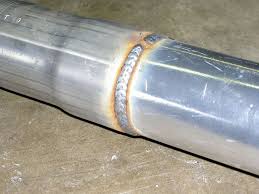


once more its a huge advantage to have access to a decent welder, a GOOD MIG is adequate, a good TIG is IDEAL
obviously if you might need to remove the exhaust to get access to some drive train component like when your occasionally replacing a clutch, you'll want to use clamps so you can remove the exhaust if required, to maintain access , but if thats not required weld the pipe
http://www.welders-direct.com/mm5/merch ... ry_Code=MW
a welder like this with the correct accessories can do 95% of anything required when dealing with the steel parts on most cars
http://www.summitracing.com/parts/wlk-3 ... 7AodbEEAqQ
viewtopic.php?f=56&t=1166
viewtopic.php?f=56&t=1166&p=30424&hilit=exhaust+tools#p30424
viewtopic.php?f=60&t=1283
http://www.popularhotrodding.com/engine ... 505em_exh/
viewtopic.php?f=60&t=7794
viewtopic.php?f=80&t=7323&p=24881&hilit=side+pipes#p24881
viewtopic.php?f=60&t=1594
viewtopic.php?f=56&t=7806&p=26776&hilit=corvette+exhaust#p26776
http://www.youtube.com/watch?v=JohBHzhOyPg


Ive always like the look of corvettes with well designed a side exhaustKacyC3 said:can, I install a c4 exhaust on a c3 corvette? The reason I asked is I found this article
http://www.popularhotrodding.com/enginemasters/articles/hardcore/0505em_exh/
And what it would take to duplicate the results and parts used
but they get a bad reputation from guys who have girl friends burn the back of their legs exiting the car on hot side pipes, or guys that insist on running extremely restrictive inserts to reduce the noise who then bitch about the resulting loss of power
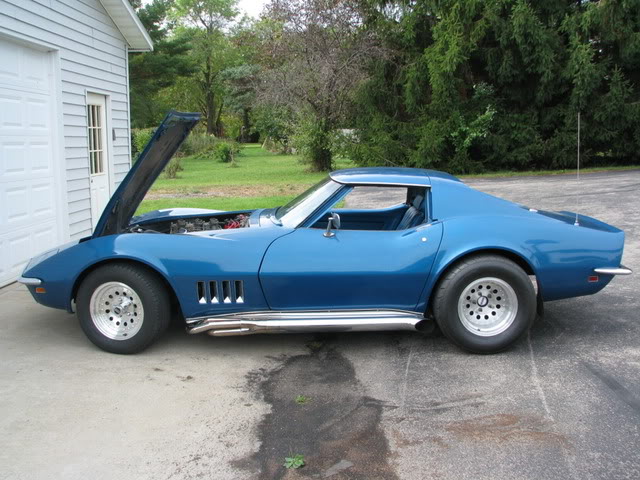
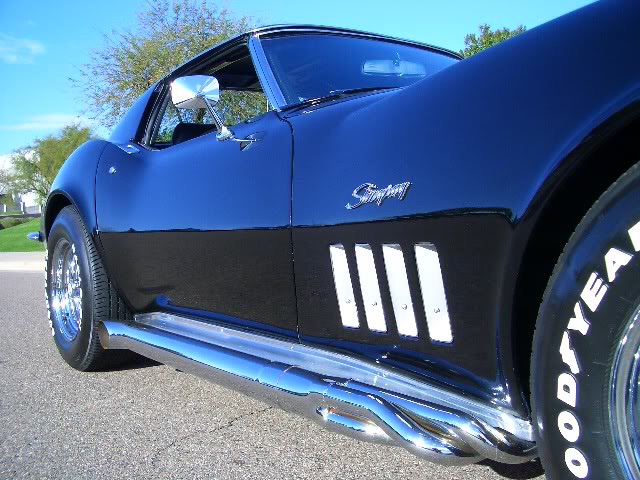
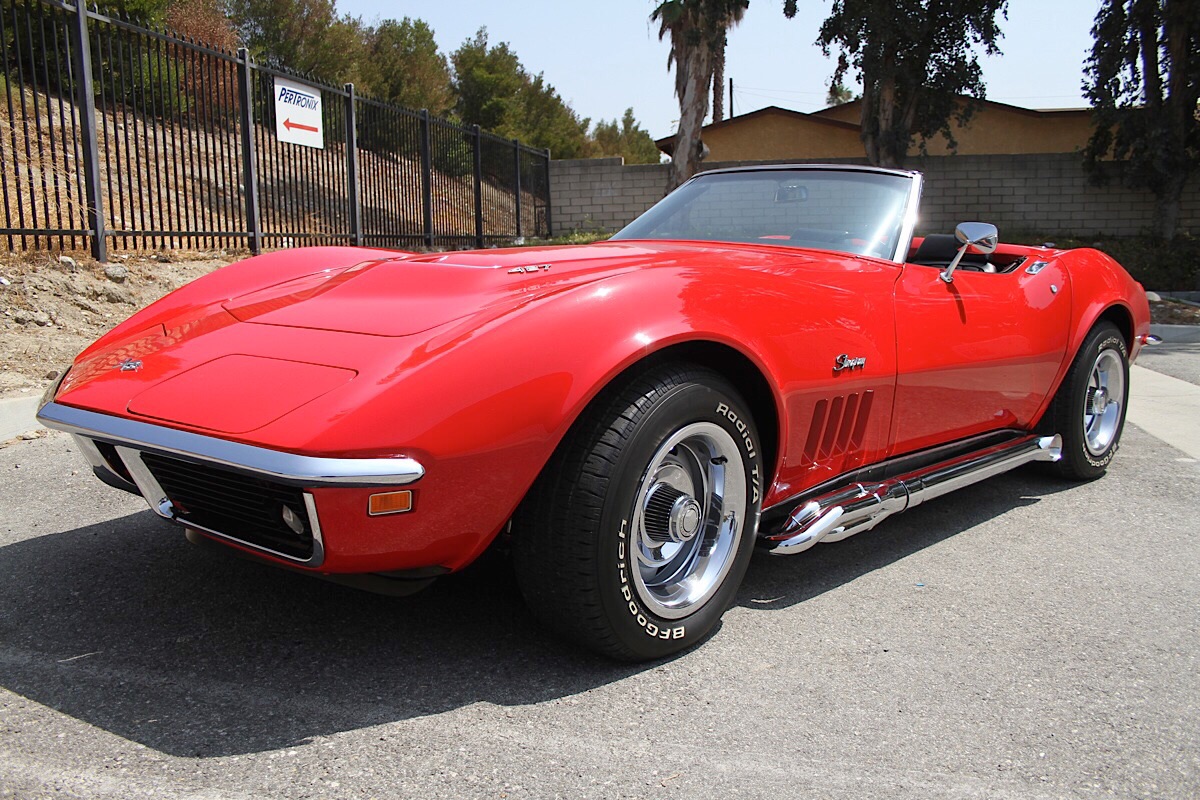
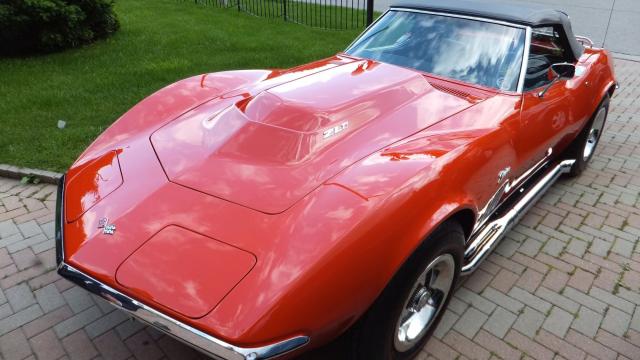
if you have the required fabrication skills and a decent welder, and a few tools and you don,t mind cutting and welding you can make darn near anything in an exhaust system fit on a c3 corvette, but I doubt it will be a bolt in deal, I doubt youll find it worth the effort , rather than just getting the correct parts
the ideal exhaust on any corvette will have less than 1 psi of back pressure at peak power rpms and headers designed to match the engines power curve.
In most cases commercial headers are designed to be easy to manufacture, cheap to produce and simple to install with very little thought wasted on maximizing power or designing a header that maximizes the engine torque in its usually power band.
Id point out that a c3 corvette has a cross member that in UN-modified for restricts an under the car exhaust that routes thru that cross member to about a 2.5" diam pipe size but if you can fabricate thats hardly a huge problem to over come, and you do have the option of a side exhaust
BTW maybe its just me! but I watch the shows where they recondition old muscle cars and in many cases they just don,t take the effort to do what I think is a reasonable bit of maintainable.
if your dealing with some component that's generally not easily visible but easy to removed , a few minutes with a powered rotary brush and some cold galvanize spray or at least some rust surface prep and some paint seems like its well worth the effort and for damn sure use of some NEW non-rusted BOLTS, to replace old rusty crap, and some anti-seize paste on the bolt threads, to replace old rusty fasteners, seems like its a reasonable precaution.
hey if your replacing something like a rusty radiator support bracket , rear spring perch, cross member,or battery box bracket, honestly how much extra effort is required to do the job correctly vs letting rust get a good head start on destroying the car?
http://forum.grumpysperformance.com/viewtopic.php?f=44&t=1844&p=4823&hilit=sand+blast#p4823
http://forum.grumpysperformance.com/viewtopic.php?f=50&t=3224&p=8580#p8580
if the exhaust header or manifold gaskets surface has not been damaged that should work, but if the gaskets damaged it will need to be replaced, thats one reason the soft copper gaskets are rather favored,
using anti-seize paste on bolt or stud threads helps prevent future problems
and failure to use anti-seize paste on any header or exhaust manifold bolt or stud will eventually cause problems ESPECIALLY if you use them on aluminum heads
What causes an exhaust manifold stud/bolt to break?
A: The exhaust manifolds are formed from the factory using fine grain cast iron, and like most metals, it expands and contracts during duty cycles of heating and cooling. This expansion happens naturally, and at first, the manifold and mounting studs are in a state of “elastic deformation.” Elastic deformation is basically expansion and contraction over a period of time retaining the original size and shape. Each duty cycle will provide tension stress on the studs or bolts that hold the manifold in place. The mounting hardware exhibits flexibility over time. However, as the manifold continues to expand and contract more dimensionally, each consecutive time creates larger and larger tension forces that move beyond the elastic state of deformation and become what is referred to as “plastic deformation.” Basically the manifold stretches beyond return and fractures the mounting stud, leaving the manifold permanently deformed and dimensionally changed. This expansion and stretching of the manifold bolts over numerous duty cycles eventually causes too much tension on the bolt(s), stretching them beyond capacity and causing them to fail.
Information provided by: ProMaxx Tools
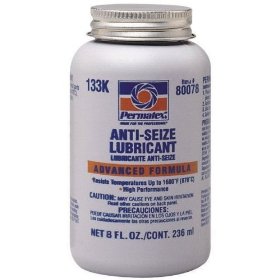
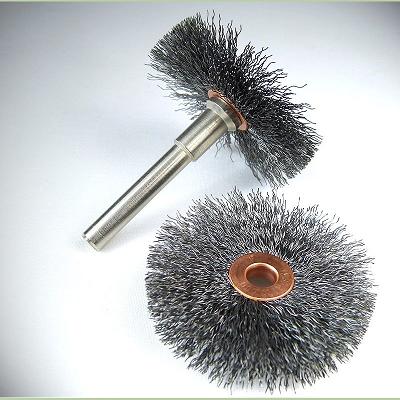
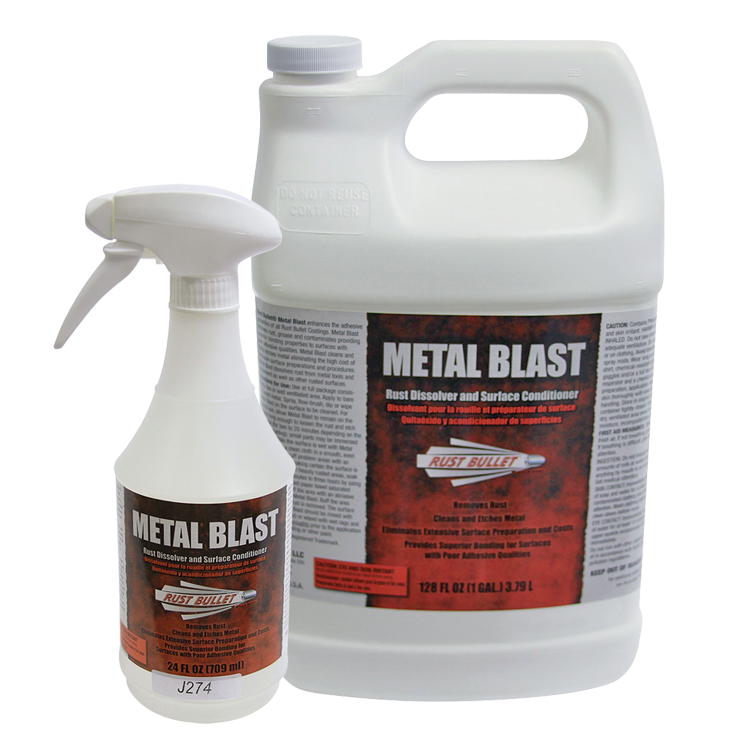
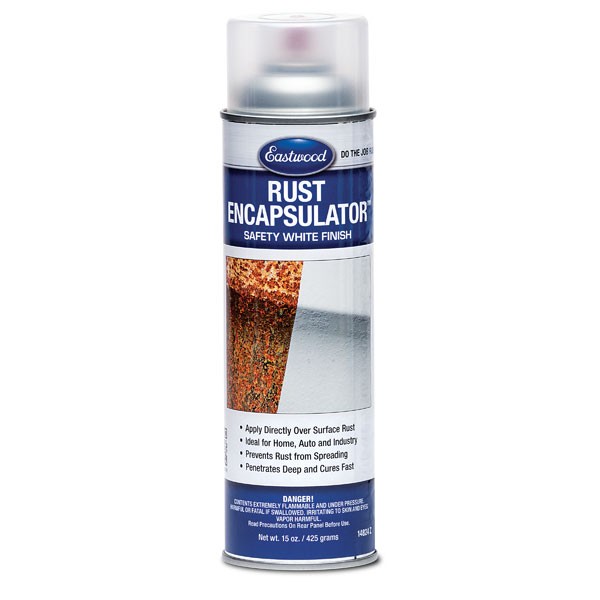
viewtopic.php?f=56&t=7831&p=26979&hilit=side+pipes#p26979
viewtopic.php?f=80&t=7323&p=24881&hilit=side+pipes#p24881
viewtopic.php?f=56&t=2350&p=12388&hilit=side+pipes#p12388
viewtopic.php?f=80&t=7323&p=24881&hilit=side+pipes#p24881
viewtopic.php?f=56&t=9296&p=33590#p33590
VIDEO SIDE PIPES HOOKER INSERTS VS SPIRO INSERTS
keep in mind the OEM engineers are more concerned with low noise levels and maximizing power in the idle to 3500 rpm band where most cars operate 90% of the time.
upgrading to a dual 3" exhaust with an (X) pipe and low restriction mufflers matched to headers calculated to match your intended power band could easily boost net power 30 plus hp
Here are some numbers assuming exhaust behaves as an ideal gas and the pressure inside an exhaust system is 1 atmosphere due to it having an open end.
degrees F-------gas volume (1 mol)
100F-------------25.51L
300F-------------34.63L
600F-------------48.32L
Exhaust gasses at 600F are almost double the volume as they cool and reach the tailpipe. If exhaust efficiency is to keep velocity constant, wouldn't it not make sense to keep the relative diameter of the pipe consistent with temperature of the exhaust in the system?
Why aren't racing exhausts pipes tapered to maintain this difference in volume?
WELL ONE REASON is that on a race engine the whole exhaust length is not used or needed to maximize low rpm torque, and at higher rpms a tuned header collector more closely matches the intended power curve, thus as long as the exhaust is LESS restrictive past the header collector its not hurting the power curve, so its maintained at the collector exit diameter , or routed to a (X) pipe to further reduce the restriction, remember the exhaust is in pulsed spaced 90 degrees apart not a solid consistent flow.
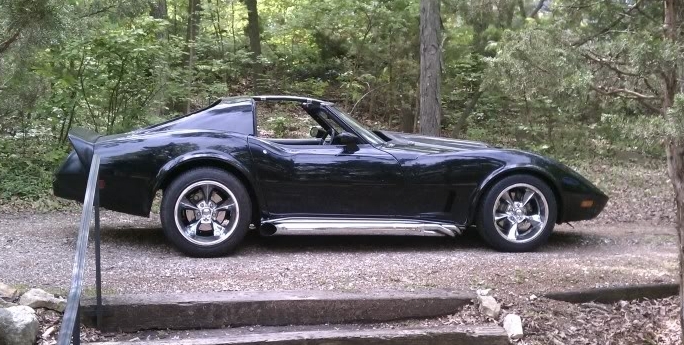
READ THIS THREAD AND SUB LINKS
viewtopic.php?f=56&t=1503
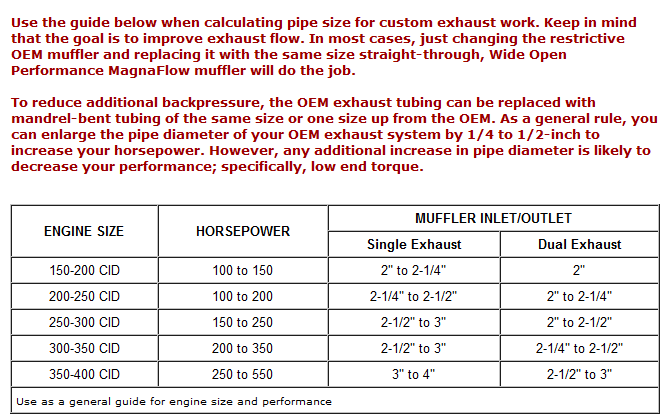
TAKE the effort to calculate what the correct type/size headers will be
http://www.wallaceracing.com/header_length.php
http://www.pontiacracing.net/js_header_length1.htm
http://www.bgsoflex.com/cgi-bin/progaut ... 3&rpm=6300.
http://www.mk5cortinaestate.co.uk/calculator5.php
threads and sub links you should read thru
viewtopic.php?f=56&t=495
viewtopic.php?f=56&t=1166
viewtopic.php?f=56&t=1503&p=8318&hilit=side+pipes#p8318
viewtopic.php?f=56&t=961
viewtopic.php?f=56&t=185
viewtopic.php?f=56&t=2916
viewtopic.php?f=56&t=1730&p=5392&hilit=header+test#p5392
viewtopic.php?f=56&t=3529
viewtopic.php?f=56&t=961&p=1716&hilit=side+pipes#p1716
Last edited by a moderator:
